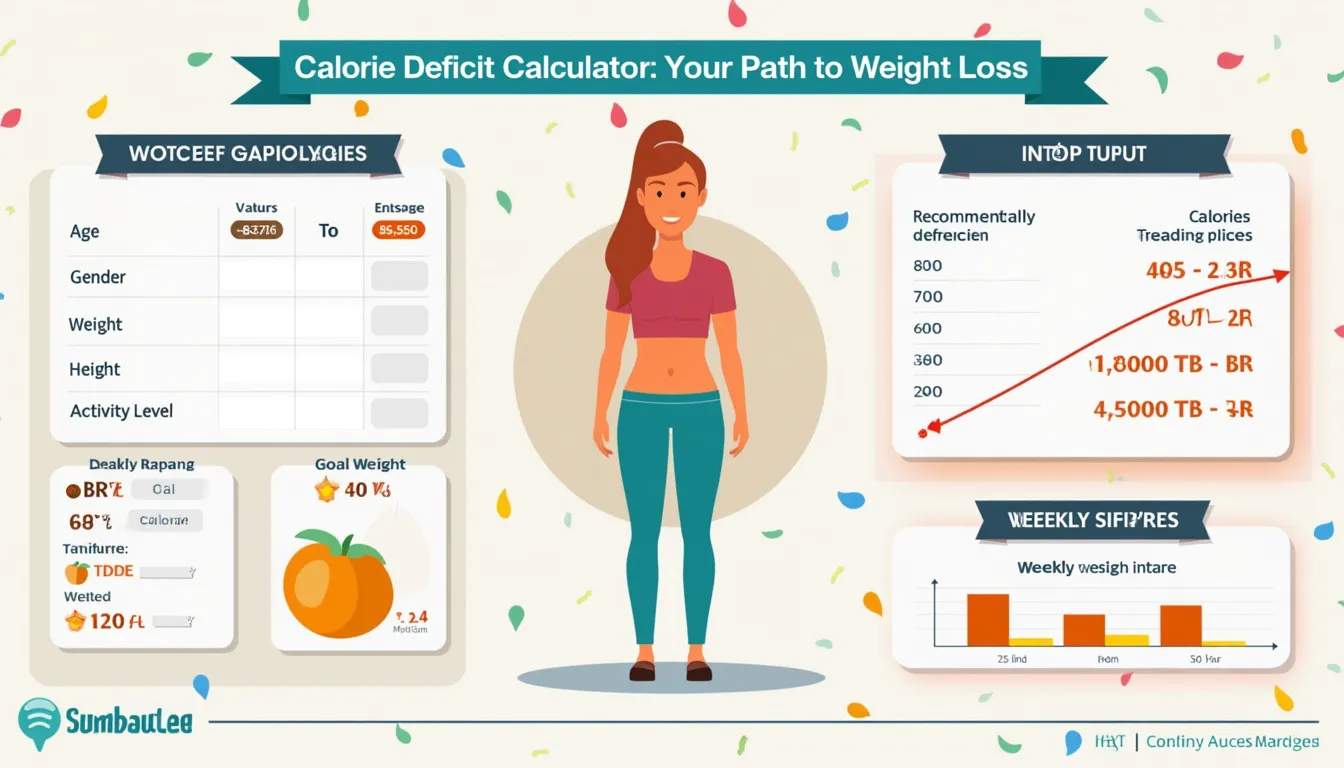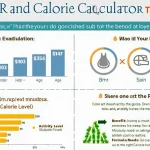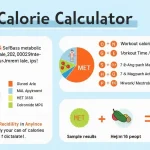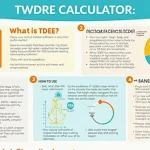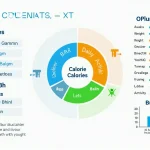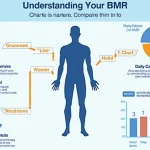Calorie Deficit Calculator
Is this tool helpful?
How to use the tool
Follow these steps to turn your goals into precise numbers:
- Age – type your age in years. Example: 22 or 54.
- Gender – pick male or female.
- Weight – current body mass in kilograms. Example: 82 kg or 95 kg.
- Height – stature in centimetres. Example: 180 cm or 165 cm.
- Activity level – select a factor from 1.2 (sedentary) to 1.9 (extra-active).
- Goal weight – the target you wish to reach. Example: 75 kg or 85 kg.
- Timeframe – weeks to hit the goal. Example: 10 weeks or 20 weeks.
- Press Calculate. The results panel shows your personalised numbers.
Formulas used
- BMR (Mifflin-St Jeor): $$\text{Male}=10W+6.25H-5A+5\qquad\text{Female}=10W+6.25H-5A-161$$
- TDEE: $$\text{TDEE}= \text{BMR} \times \text{Activity Factor}$$
- Daily calorie deficit: $$\text{Deficit}= rac{(W-W_g)\times7700}{t\times7}$$
- Recommended intake: $$\text{Intake}= \text{TDEE}-\text{Deficit}$$
- Weekly weight loss: $$\text{Loss}= rac{\text{Deficit}\times7}{7700}$$
Example 1
- Inputs: 28 y male, 82 kg, 180 cm, Lightly-active (1.375), goal 75 kg, 10 weeks.
- BMR=1810 kcal; TDEE=2484 kcal.
- Daily deficit=770 kcal; Intake=1714 kcal.
- Weekly loss=0.7 kg.
Example 2
- Inputs: 45 y female, 95 kg, 165 cm, Moderately-active (1.55), goal 85 kg, 20 weeks.
- BMR=1595 kcal; TDEE=2473 kcal.
- Daily deficit=550 kcal; Intake=1923 kcal.
- Weekly loss=0.5 kg.
Quick-Facts
- 1 kg fat ≈ 7,700 kcal (Hall et al., 2011).
- Safe weight loss: 0.5-1 kg/week (CDC, 2022).
- Minimum intakes: 1,200 kcal women, 1,500 kcal men (Academy of Nutrition & Dietetics, 2020).
- Mifflin-St Jeor accurate within 10% for most adults (Frankenfield et al., 2005).
- Activity factors span 1.2-1.9 (FAO/WHO/UNU Expert Report, 2004).
FAQ
What does the calorie-deficit calculator deliver?
It delivers BMR, TDEE, daily deficit, and suggested intake (Hall et al., 2011). Use them to plan food and exercise.
How accurate are the numbers?
Mifflin-St Jeor predicts resting energy within 10% for most adults, making it the preferred clinical equation (Frankenfield et al., 2005).
How large should my deficit be?
A 500-1000 kcal daily deficit produces 0.5-1 kg weekly loss, balancing speed and muscle preservation (CDC, 2022).
When do I need to recalculate?
Recompute after every 2-4 kg change or any activity shift. Energy needs fall as body mass drops (Heymsfield & Wadden, 2017).
Is it safe to eat below 1,200/1,500 kcal?
Diets under these thresholds risk nutrient shortfalls; consult a registered dietitian before proceeding (Academy of Nutrition & Dietetics, 2020).
Do I need to track macronutrients?
Prioritise protein 1.2-1.6 g/kg to protect muscle during deficits, then split remaining calories between carbs and fats (Phillips, 2016).
Can exercise replace calorie cutting?
Diet plus exercise doubles fat loss versus diet alone, says a meta-analysis of 66 trials (Johns et al., 2014).
Who should see a professional first?
People with diabetes, heart disease, pregnancy, or eating disorders require medical guidance before starting energy-restricted plans (ADA, 2023).
Important Disclaimer
The calculations, results, and content provided by our tools are not guaranteed to be accurate, complete, or reliable. Users are responsible for verifying and interpreting the results. Our content and tools may contain errors, biases, or inconsistencies. Do not enter personal data, sensitive information, or personally identifiable information in our web forms or tools. Such data entry violates our terms of service and may result in unauthorized disclosure to third parties. We reserve the right to save inputs and outputs from our tools for the purposes of error debugging, bias identification, and performance improvement. External companies providing AI models used in our tools may also save and process data in accordance with their own policies. By using our tools, you consent to this data collection and processing. We reserve the right to limit the usage of our tools based on current usability factors.
